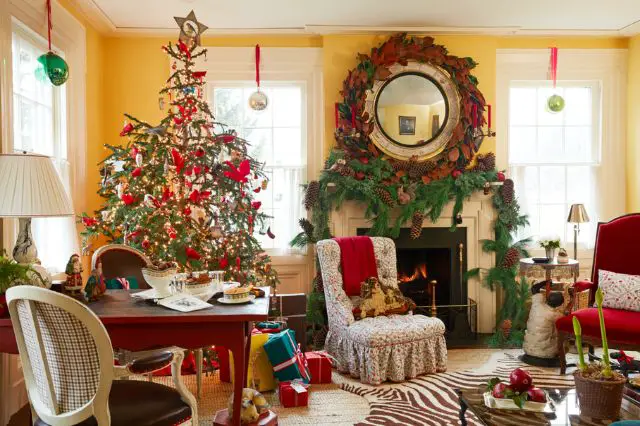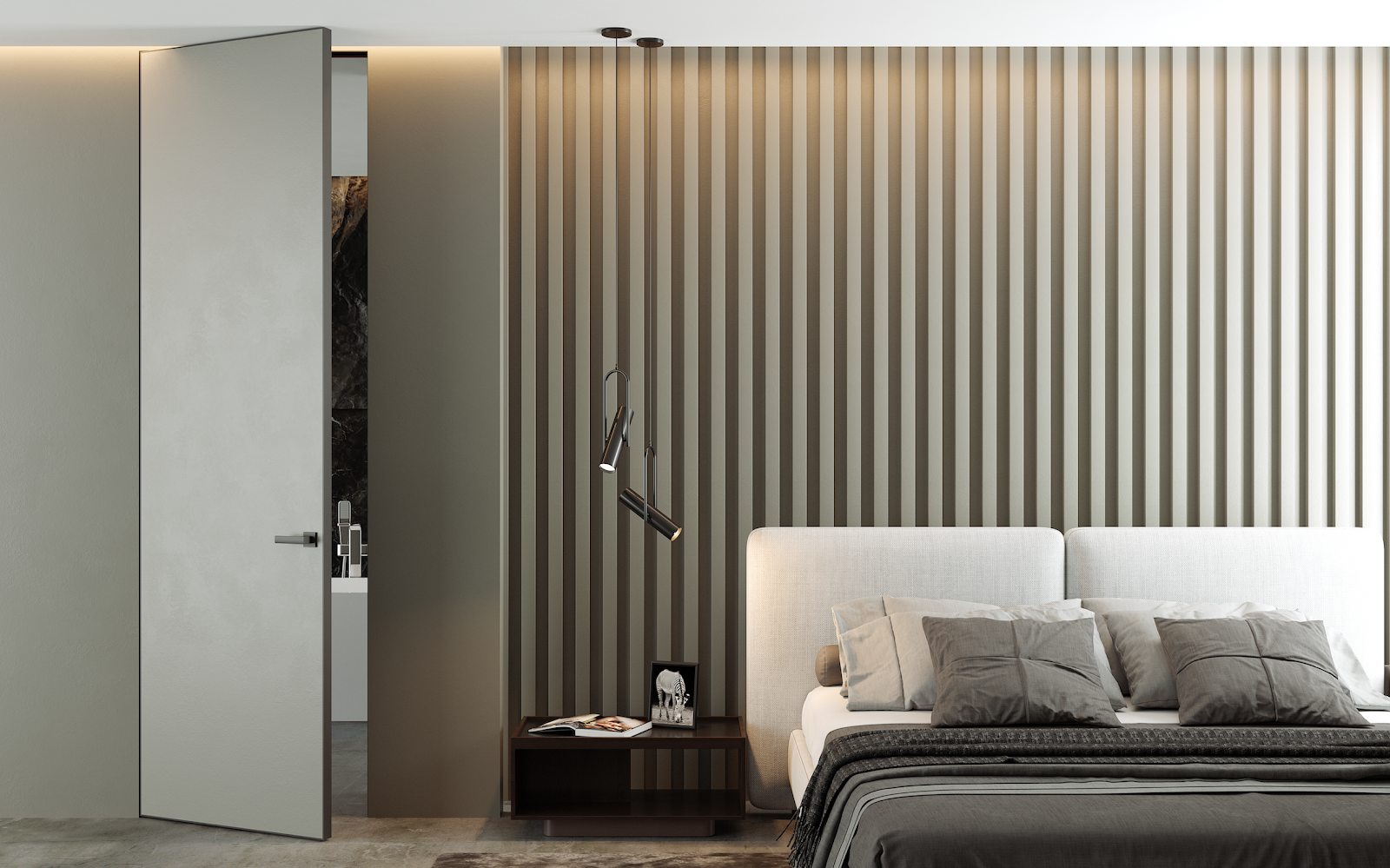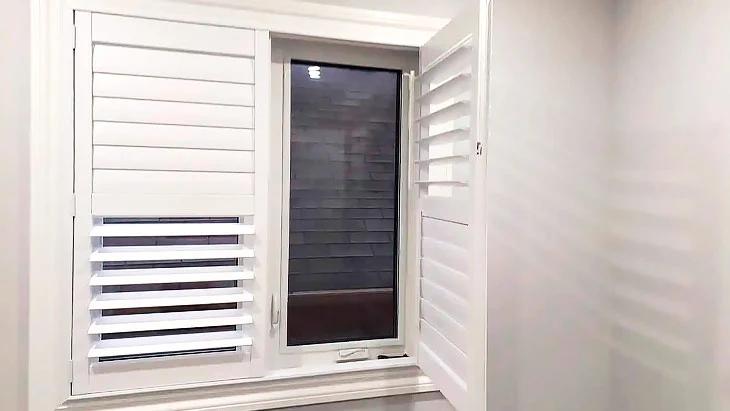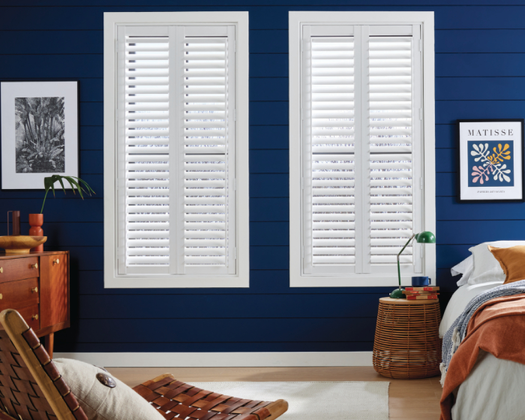Lifestyle
Ultimate Guide on How to Decorate for Christmas

When the holiday season approaches, there’s nothing quite as exciting as decorating your home for Christmas. The twinkling lights, fragrant evergreen trees, and festive ornaments create an atmosphere of joy and togetherness.
Among the many decorations that adorn our homes during this festive season, stained glass ornaments stand out for their beauty and significance.
If you’re not an expert at decorating for Christmas, don’t worry! This guide will help you make your home look super nice and Christmassy.
So, let’s get started with making your home look fantastic for the Christmas holidays!
1. Planning Your Christmas Decorations
Before you dive into decorating for Christmas, it’s essential to plan your approach. Here are some tips to consider:
1.1. Set a Budget
Determine how much you’re willing to spend on decorations, including lights, ornaments, and other holiday décor. Having a budget in mind will help you make smart choices and avoid overspending during the holiday season.
1.2. Choose a Decorating Theme
Your Christmas theme will set the tone for your decorations. Consider classic themes like traditional, rustic, modern, or whimsical. Your theme will guide your choice of colours, ornaments, and other decorations.
1.3. Make a Checklist
Create a checklist of all the items you need to decorate your home for Christmas. This can include items like a Christmas tree, ornaments, wreaths, lights, garlands, stockings, and more. Having a checklist will keep you organized and ensure you remember everything.
2. Decorating Your Christmas Tree
The Christmas tree is usually the most important decoration during the holiday season. Whether you prefer a real tree or an artificial one, here’s how to decorate it in style:
2.1. Select the Right Tree
If you opt for a real tree, choose one that’s fresh and healthy. For artificial trees, select one that fits your space and theme.
2.2. Lighting
Start by stringing lights on the tree before adding ornaments. LED lights are energy-efficient and come in various colors and styles. Make sure the lights are spread out nicely and that each one is turned on and working well before you continue.
2.3. Ornaments
Choose a color scheme for your ornaments that complements your theme. Traditional red and green, gold and silver, or a pastel palette are popular choices. Hang the larger ornaments first and then fill in with smaller ones. Remember to include sentimental or handmade ornaments that hold special memories.
2.4. Tree Topper
Finish off your tree with a beautiful tree topper, such as a star, angel, or a unique ornament that fits your theme.
3. Wreaths and Garlands
Wreaths and garlands can be used to decorate various areas of your home, both indoors and outdoors. Here’s how to use them effectively:
3.1. Front Door Wreath
A wreath on your front door is a warm welcome to guests. Choose a wreath that matches your theme, and consider adding a festive bow or ribbon for an extra touch.
3.2. Mantel Garlands
Decorate your fireplace mantel with garlands. You can intertwine them with string lights and add ornaments or small decorative items to create a charming holiday display.
3.3. Staircase Garlands
If you have a staircase, wrap garlands around the handrail to create a beautiful, sweeping effect. Consider adding ornaments and bows at regular intervals.
4. Outdoor Decorations
Don’t forget to extend your Christmas decorating to the outdoors to spread holiday cheer to your neighbors and passersby. Here are some ideas for outdoor decorations:
4.1. Lights
Wrap outdoor trees, bushes, and architectural features with string lights to create a festive glow. Consider using solar or LED lights for energy efficiency.
4.2. Lawn Decorations
Place lawn ornaments, such as reindeer, snowmen, or large ornaments, to create a winter wonderland in your front yard.
4.3. Wreaths
Hang wreaths on your windows or the exterior of your home. These are visible from the street and add a charming touch to your Christmas decor.
5. Setting the Table
Your holiday decorations should extend to your dining table, creating a warm and inviting atmosphere for your festive feasts. Here’s how to set the perfect Christmas table:
5.1. Tablecloth and Linens
Choose a tablecloth and napkins that match your theme. Consider using elegant runners or placemats for an added layer of decoration.
5.2. Dinnerware
Select dinnerware and flatware that complement your theme. Special holiday plates or colorful chargers can add a festive touch to your table.
5.3. Centerpiece
Create a beautiful centerpiece for your table. This could be a floral arrangement, a collection of candles, or a combination of both. Be sure it doesn’t obstruct the view or conversations.
5.4. Name Cards
Personalize your dining experience by creating name cards for each guest. You can make these things either very basic or really fancy, depending on the style you want.
6. DIY Christmas Decorations
If you’re looking to add a personal touch to your Christmas decorations, consider making some of your own. Here are a few DIY decoration ideas:
6.1. Handmade Ornaments
Create custom ornaments using craft supplies like felt, paper, or clay. These can be personalized with names, dates, or special messages.
6.2. Homemade Wreaths
Craft your own wreath using items from your garden or craft store. You can make wreaths from pinecones, holly, or even old Christmas cards.
6.3. Mason Jar Luminaries
Paint and decorate mason jars to create charming luminaries. Place tea lights or battery-operated candles inside for a warm, festive glow.
7. Sustainable Decorations
With a growing focus on sustainability, many are opting for eco-friendly Christmas decorations made from natural, recyclable materials.
7.2. Minimalism
The less-is-more approach is gaining popularity. Simplify your decorations to create a minimalist and elegant holiday look.
7.3. Vintage and Retro
Nostalgia is making a comeback with vintage-inspired ornaments and decorations. Look for items reminiscent of Christmases past.
8. Safety and Maintenance
While decorating for Christmas is a joyful experience, it’s essential to keep safety in mind. Here are some safety and maintenance tips to consider:
8.1. Check Lights
Inspect all lights for frayed wires or broken bulbs. Replace any damaged items to prevent electrical issues or fire hazards.
8.2. Secure Decorations
Make sure all decorations are securely anchored and won’t pose a tripping hazard. This is especially important for outdoor decorations subject to wind and weather.
8.3. Water Your Tree
If you have a live tree, keep it watered to prevent it from drying out. A well-hydrated tree is less likely to become a fire hazard.
8.4. Childproof Decorations
If you have young children or pets, consider the placement of decorations to ensure they won’t be easily accessed or knocked over.
Final Tip
In the end, decorating for Christmas is all about making your home feel warm and special.
Remember to plan, stay safe, and, most importantly, enjoy the process of transforming your living space into a winter wonderland for your family and friends to cherish.
So, grab your ornaments, hang the wreaths, and let the holiday magic unfold in your home.
And don’t forget to share a photo of your Christmas tree or your favorite holiday decoration in the comments. We’d love to see it!
Merry Christmas and happy decorating!
Home Improvement
Transform Your Home with Contemporary Doors Interior: A Modern Aesthetic


Choosing contemporary doors interior is a vital aspect of modern home design, offering both functionality and a stylish touch. These doors are more than just functional elements; they can significantly enhance the look and feel of your living spaces.
In this guide, we will explore different types of contemporary interior doors, their benefits, and what to consider when selecting the perfect doors for your home. We’ll also highlight TrioDoors door stores in Toronto, a leading provider of high-quality interior doors.
Exploring Types of Contemporary Interior Doors
Contemporary interior doors come in a wide range of styles and materials. Here’s a look at some of the most popular options:
- Panel Doors
- Modern Twist: Traditional panel doors updated with clean lines and modern materials.
- Variety of Configurations: Available in multiple panel configurations, such as two, four, or six panels.
- French Doors
- Elegance and Light: Glass panels allow for the flow of natural light, enhancing the sense of space.
- Contemporary Glass Options: Choose from frosted, tinted, or clear glass for a modern touch.
- Sliding Doors
- Space-Saving: Slide along a track, perfect for areas where space is limited.
- Modern Aesthetic: Commonly used in modern homes for closets, bathrooms, and as room dividers.
- Pocket Doors
- Hidden Design: Slide into the wall cavity, making them virtually invisible when open.
- Ideal for Small Spaces: Great for rooms where a swinging door would be impractical.
- Barn Doors
- Rustic Meets Modern: Mounted on a sliding track, combining rustic charm with contemporary design.
- Statement Piece: Acts as both a functional door and a focal point in any room.
Key considerations when choosing contemporary interior doors
- Material Selection
- Wood: Classic look, customizable with various finishes and stains.
- MDF (Medium-Density Fiberboard): Smooth, easy to paint, and more affordable than solid wood.
- Glass: Perfect for allowing light flow while maintaining a modern aesthetic.
- Metal: Durable, often used in industrial or modern designs.
- Style and Design
- Consistency: Ensure the door style matches your home’s overall design theme.
- Functional Needs: Consider the specific purpose and requirements for each door.
- Size and Measurements
- Standard vs. Custom Sizes: While most doors come in standard sizes, custom options are available for unique spaces.
- Accurate Measurements: Proper measurement of the door frame is crucial to avoid fitting issues.
- Hardware and Accessories
- Handles and Knobs: Choose hardware that complements the door style and home decor.
- Hinges and Tracks: Ensure hardware is durable and functional for the chosen door type.
- Installation
- Professional Installation: For best results, consider professional installation.
- DIY-Friendly Options: Some doors are designed for easy DIY installation.
Selecting the right contemporary doors interior is essential for achieving both functionality and a modern aesthetic in your home. From sleek flush doors to elegant French doors, the choices are vast and varied. When choosing interior doors, consider factors such as material, style, size, and installation requirements to ensure they meet your needs.
For quality and reliability, purchase your contemporary interior doors (https://triodoors.ca/interior-doors/) from reputable suppliers like TrioDoors door stores in Toronto. It offers a wide selection of high-quality doors that cater to various styles and budgets, ensuring you find the perfect doors for your home.
Enhance your living space today with the ideal contemporary doors interior!
Home Improvement
Best Place to Buy California Shutters in Toronto and Things to Know


In Toronto with its population density, a large number of residents do care about privacy. This is why Vinyl Light gets lots of requests for California shutters Toronto area.
What Are California Shutters
California shutters are a form of interior window covering that is usually made of wood or composite materials. They are sometimes referred to as plantation shutters or just shutters. To adjust light and privacy, they have large slats that may be tilted open or closed.
These shutters, which are installed inside window frames, are renowned for their strength, beauty, and capacity to improve sound absorption and insulation in a space. They give windows in homes and businesses a traditional, refined appearance, and they are well-liked for their timeless design and usefulness.
Features of California Shutters
California shutters’ primary advantages are:
- Beauty. They provide any area with a classic, ageless look that enhances its overall charm.
- Light control. California shutters let you control the amount of natural light that enters your room, giving you freedom and ambiance.
- Privacy. Because they offer such remarkable solitude, they are ideal for baths and bedrooms.
- Energy efficient. By keeping your home warm in the winter and cool in the summer, the insulation they offer may help you save money on your energy bills.
- Resilience. California shutters are robust and durable.
- Easy maintenance. They are easy to maintain, requiring only the occasional wipe down with a damp cloth.
- Increase the value of your property. Installing California shutters could increase the value of your home because many purchasers believe them to be a desired feature.
California vs. Plantation Shutters


Depending on your unique requirements, tastes, and the design of your house, you can choose between plantation and California shutters.
- Window size. California shutters may look more proportionate on smaller windows and larger windows. Plantation shutters can improve the appearance of larger windows.
- Room style. Take into account the room’s general design and aesthetic. Plantation shutters complement modern or contemporary decor, while California shutters work well with traditional décor.
- Budget. Since plantation shutters may cost more, it may be a determining factor.
- Needs for light and privacy. Consider the degree of light and privacy control that you require. Both types of shutters offer good privacy.
Gift
Mother’s Day Gift Ideas


Finding the perfect Mother’s Day gift can be a little bit stressful, to say the least, especially if your mom is super picky or already seems to have everything she needs. Do you play it safe and go with the traditional flowers, cards, and chocolates, or do you opt for something unique and quirky?
If you are stuck for Mother’s Day gift ideas, either for your mom, your mother-in-law, or another mom in your life, the below guide is just what you need. Whatever your budget, you are guaranteed to find something she will love in the below Mother’s Day gift ideas.
Heartfelt Mother’s Day Gifts
If you want to pull at her heartstrings, you need a heartfelt and meaningful gift that she will never forget, such as the ones below:
Personalized Photo Album
There is nothing quite like a personalized photo album to evoke emotions and get her reaching for the nearest box of tissues. You can buy photo albums either online or in stores and then add family photographs and captions to each page. Alternatively, if you pride yourself on your crafting skills, you could even make your own!
Custom Engraved Jewelry
Custom engraved jewelry always goes down a treat and there are so many different options to choose from, including customized necklaces, earrings, bracelets, and even rings. When it comes to custom jewelry engraving, make sure you use a reputable jeweler that can capture the fine details of your message.
Unique Mother’s Day Gifts
Don’t want to buy another generic Mother’s Day gift? Check out the below unique Mother’s Day gift ideas that you won’t forget in a hurry.
A Subscription Service
The gift that keeps on giving, there are so many different types of subscription services that you can treat her to depending on her likes and interests. For example, if she loves to be surrounded by nature, why not treat her to a monthly flower basket? Or if she is partial to a glass of wine or whiskey, a drinks subscription service is a great idea.
An Experience Day
The perfect Mother’s day gift for the mom who already has everything she needs, there are so many amazing experience days to choose from. For those who like to relax, a spa day complete with a facial and full body massage is the obvious choice.
Alternatively, if she is a bit of a thrill seeker, a racetrack experience will be right up her street. You can find experience days to suit all budgets, most of which can be redeemed for up to 12 months.
Budget-Friendly Mother’s Day Gifts
Just because you are on a tight budget doesn’t mean you can’t spoil your mom on Mother’s Day. In fact, some of the most thoughtful gifts are often those that don’t cost very much at all.
A Homemade Beauty Hamper
All moms love to be pampered, yet few get the chance to sit back and relax with everyone else’s needs to take care of before their own. The great thing about a homemade beauty hamper is that you can pick and choose all your mom’s favorite beauty supplies, creating a bespoke box that she is guaranteed to love.
Plus, if you are on a tight budget, you could even have a go at making your own beauty products, such as DIY face masks and body scrubs.
A Movie Night with the Grandkids
What could be better than snuggling up under a blanket with a selection of snacks and the love of your grandkids to keep you warm? The perfect Mother’s Day gift for grandmothers who don’t get a lot of quality time with their grandkids, all you need is a good movie, a big bowl of popcorn and you are good to go.
Final Thoughts
Just because the stores are filled with an abundance of pink cards, bunting and balloons, doesn’t mean you have to stress yourself out over Mother’s Day. Sit down quietly with a cup of coffee and think about what type of gift your mom would love.
Maybe you will try one of the above Mother’s Day gift ideas or experiences or perhaps you will come up with your own inspiration. Either way, don’t forget to tell her how much you love and appreciate her.
-



 Captions3 years ago
Captions3 years ago341 Sexy Captions to Fire Up Your Instagram Pictures
-



 Captions3 years ago
Captions3 years ago311 Night Out Captions for Instagram and Your Crazy Night
-



 Captions3 years ago
Captions3 years ago245 Saree Captions for Instagram to Boost Your Selfies in Saree
-



 Captions3 years ago
Captions3 years ago256 Best Ethnic Wear Captions for Instagram on Traditional Dress
-



 Captions3 years ago
Captions3 years ago230 Blurred Picture Captions for Instagram
-



 Captions3 years ago
Captions3 years ago275 Deep Captions for Instagram to Express Your Thoughts
-



 Quotes3 years ago
Quotes3 years ago222 Nail Captions for Instagram to Showcase Your Fresh Manicure
-



 Captions3 years ago
Captions3 years ago211 Laughing Captions for Instagram | Laughter Is the Best Medicine







